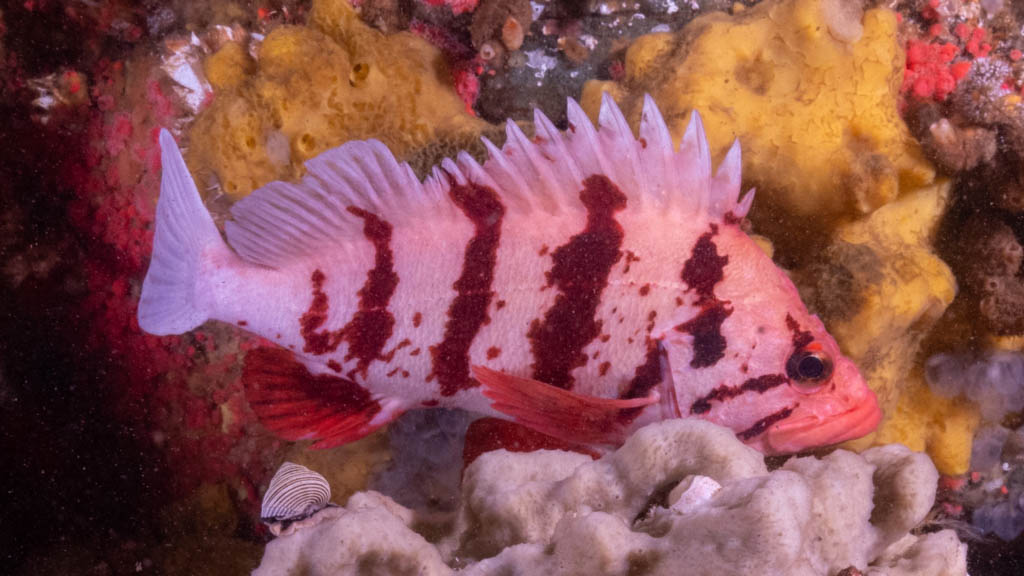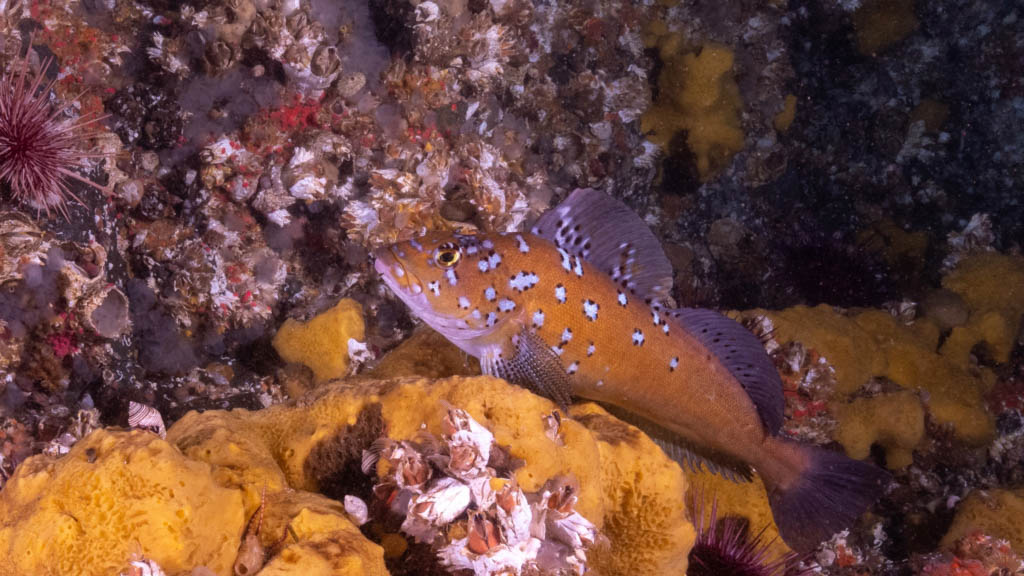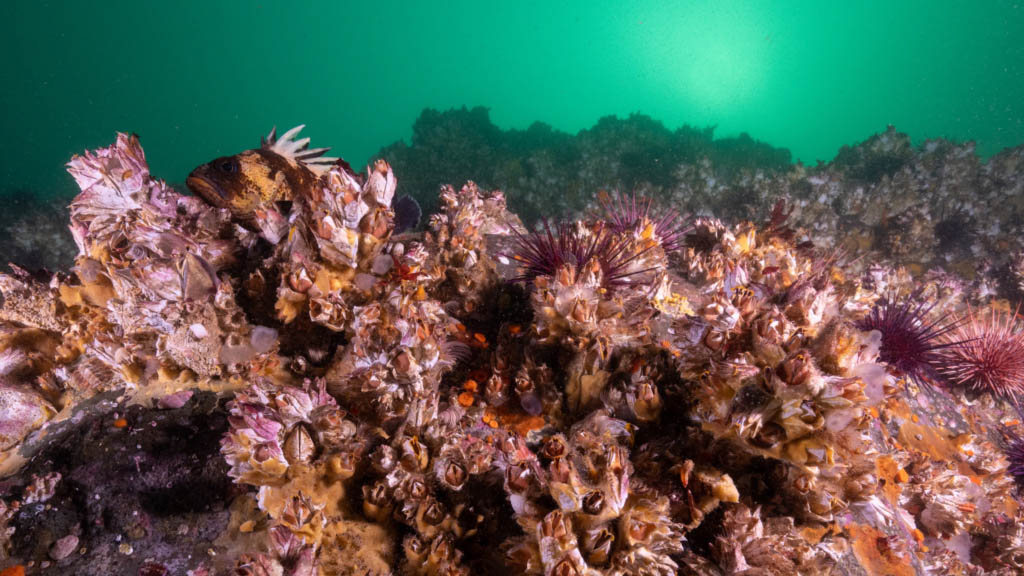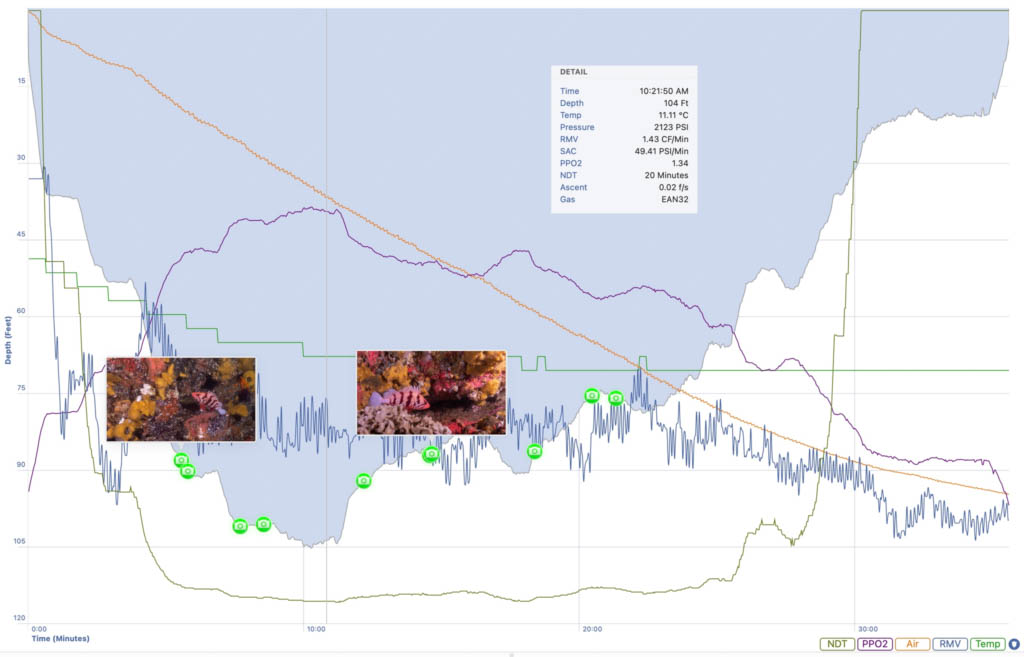All these Tiger Banded Rockfish were photographed by Roger McDonell during a recent dive at April Point Reef in Discovery Passage, British Columbia.
The tiger rockfish (Sebastes nigrocinctus), also known as the tiger seaperch, banded rockfish, and black-banded rockfish, is a species of marine ray-finned fish in the rockfishes subfamily of the family Scorpaenidae. It is found in the Pacific Ocean off the coast of western North America.
The tiger rockfish was formally described in 1859 by American zoologist William Orville Ayres, in San Francisco, California. According to some authorities, this species belongs to the monotypic subgenus Sebastichthys. The specific name nigrocinctus is a combination of the words nigra, which means “black,” and cinctus, which means “band” or “girdle,” referring to the 5 or 6 black bands on the body of this fish.
The tiger rockfish is a large, heavy-bodied rockfish with a big mouth. The dorsal fin has 13 robust spines and between 13 and 15 soft rays, while the anal fin has 3 spines and 6 or 7 soft rays. The nasal, preocular, supraocular, postocular, tympanic, coronal, parietal, and nuchal spines are all strong on the head. The space between the eyes is severely reduced, and the parietal ridges are extremely broad and rough. The caudal fin has a rounded shape. This species can reach a total length of 61 cm (24 in) and a maximum published weight of 2.2 kg (4.9 lb). They typically have five vertical bars along the body that range in colour from red to purple, brown, and black against a pink to white background. There are two bars radiating from the eyes as well. Some people appear to have had the last pair of bars merged. The tips of the pelvic and anal fins are dark in younger fish.
They are a timid fish that can live for up to 116 years, according to Roger. They are associated with reefs at depths ranging from 10 to 275 metres (33 and 902 ft), and lives on rock reefs and in kelp forests.
The tiger rockfish is a solitary and territorial species that defends a shelter, which is typically a crevice in rocky areas. The juveniles travel at sea. When alarmed or when the light changes, this species’ colour can change quickly. This species is a generalist that relies on currents to bring food to its range. This diet includes young fish, particularly herring and juvenile rockfish, as well as crustaceans such as caridean shrimp, yellow rock crab, brown rock crab and red rock crab.
This is an ovoviviparous fish, like its congeners, in which the oocytes are fertilised internally and the eggs remain within the females for some time before live larval fish are born. The larval stage lasts about two months before they settle to the bottom as juveniles. Females reach sexual maturity between 27.9 and 45.7 cm (11.0 and 18.0 in) in length, while males reach sexual maturity between 35.6 and 48.3 cm (14.0 and 19.0 in) and may not reach sexual maturity until they are eight years old.
Dive Report
Thanks to Roger McDonell for his photo contributions. You can follow Roger’s dive adventures on Facebook.










